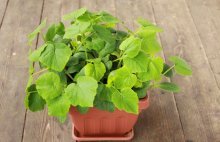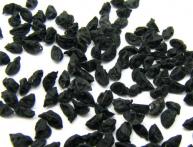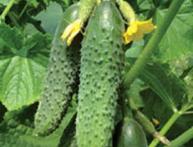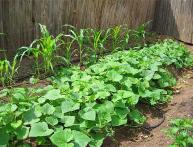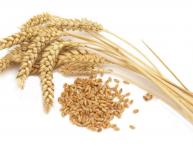Germination, planting pumpkin seeds and caring for seedlings

Most of us know about benefits of pumpkin. But not everyone likes to eat it, despite the fact that it is simply a storehouse of vitamins!
The article will be addressed to those who love pumpkin very much or just want to join a healthy diet by starting to grow it in their garden plot.
Content:
How to prepare pumpkin seeds for planting
Many gardeners leave the seeds of eaten pumpkin for sowing in order to grow seedlings from them, and then get fruits in the garden. You can also buy seeds of various varieties of pumpkin at specialized gardening centers.
In any case, before planting the seeds of this plant, you need to sort them. The largest seeds are selected, and the thin and small ones are sent to waste.
Planting pumpkin seeds directly into the soil or into a special peat tablet is most often not done. It is recommended to first devote several days to germinating the seeds, which can then be planted.
To soak, the seeds can be placed in warm water (with a temperature of about 50 degrees) for a couple of hours, and then wrapped in a damp cloth and placed in a warm place. The seeds should be kept in this state until they peck, keeping the fabric moist at all times.
Soak seeds are needed in order to:
- their germination occurred faster;
- the seeds were less susceptible to being eaten by pests, since they lose their attractive taste when soaked.
Advanced gardeners know that hatched pumpkin seeds need to be hardened off.
This is especially true for those plant varieties that grow better in the southern regions, but you want to grow them in cooler conditions.
Hardening is as follows:
- sprouted pumpkin seeds are left in a damp cloth for 3-5 days, placing them, for example, in a vegetable drawer at the bottom of the refrigerator;
- germination performed with a temperature difference: for approximately 8 to 10 hours a day, maintain a temperature of +18-20 degrees, and then from 12 to 14 hours reduce the temperature to +1-2 degrees.
Growing seedlings
It is recommended to grow pumpkin through seedlings because in this way the fruits can be obtained much earlier.
If you use ordinary room conditions to grow seedlings, then you need to place the germinated seeds in bright light, preferably on the windowsills of windows facing south. If possible, then things will go even faster if you use special greenhouses, greenhouses or nurseries.
- Since pumpkin does not tolerate transplantation well, it is better to immediately plant the germinated seeds in peat-humus pots. The suitable size for pumpkin seeds in such pots is 10x10x10 cm.
- You can make pots out of paper and fill them with soil inside. It will then be convenient to remove seedlings from such pots without damaging the roots.
- If you prefer to use seed boxes for growing seedlings, then before filling them with peat soil, add a layer of sawdust about 4 cm thick to the bottom.
Planting pumpkin seeds, previously germinated in damp cloth, is recommended approximately 20-22 days before the planned transplantation of seedlings into the ground.During this time, the seedlings usually have time to grow stronger.
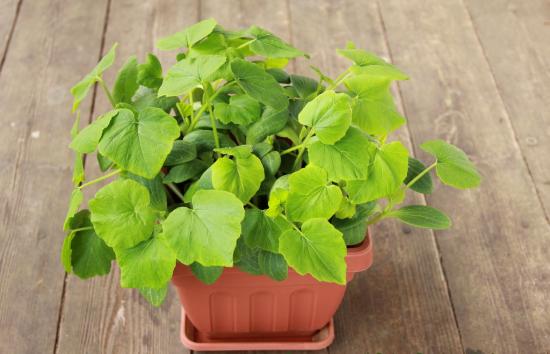
To make the seedlings strong, you need to follow some recommendations:
- In the first couple of days, you will need to provide the crops with a temperature of +18-25 degrees during the day, and at night lower it to +15-18 degrees.
- When the shoots appear, you will need to monitor the temperature again: for the first six days, during the day it should be at +15-18 degrees, and at night +12-13 degrees. This is necessary to ensure that the seedlings do not stretch.
- After such differences in the first week and a half, you can already place the crops in a room with a temperature of +18-22 degrees. But at night it is still advisable to reduce it to +13-15 degrees.
Watering and fertilizing
Pumpkin seedlings need to be watered with a moderate amount of water, but regularly. It is better not to allow the soil to dry out. If the temperature is +18-22 degrees and the soil is at optimal humidity, the seedlings grow strong, and if the soil is too wet, the seedlings stretch out.
Already seven days after the emergence of seedlings, the seedlings can and should be fed fertilizers. It is better to choose mullein solution for this. But in case of its absence, a fertilizer such as nitrophoska is suitable, which is diluted in a proportion of 15 grams per 10 liters of water.
If you do everything correctly, the pumpkin seedlings will have low and strong stems, the internodes will be short, and by the time of planting, each plant should already have two or three well-developed dark green leaves.
When the threat of frost has passed, the seedlings can be planted in a permanent place in the garden. Plant it in pre-prepared holes, which need to be shed with warm water.

